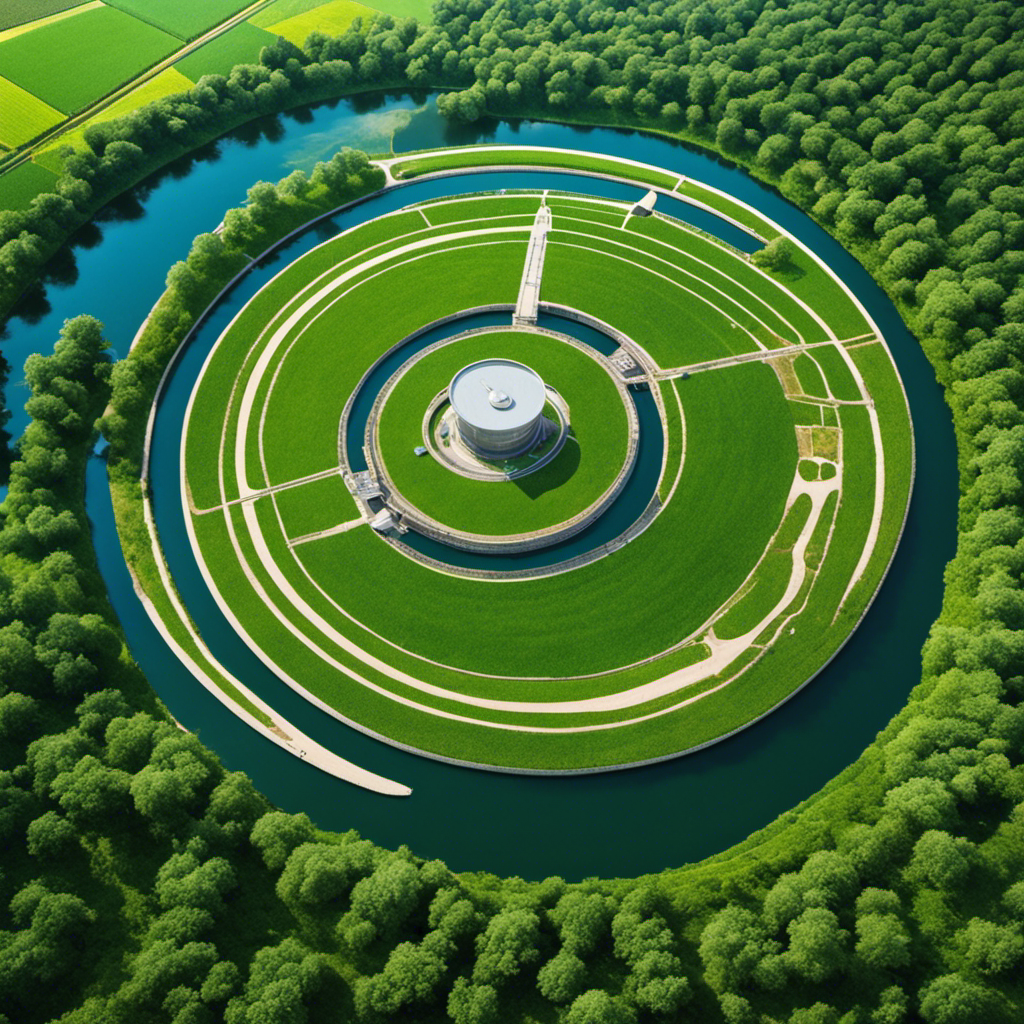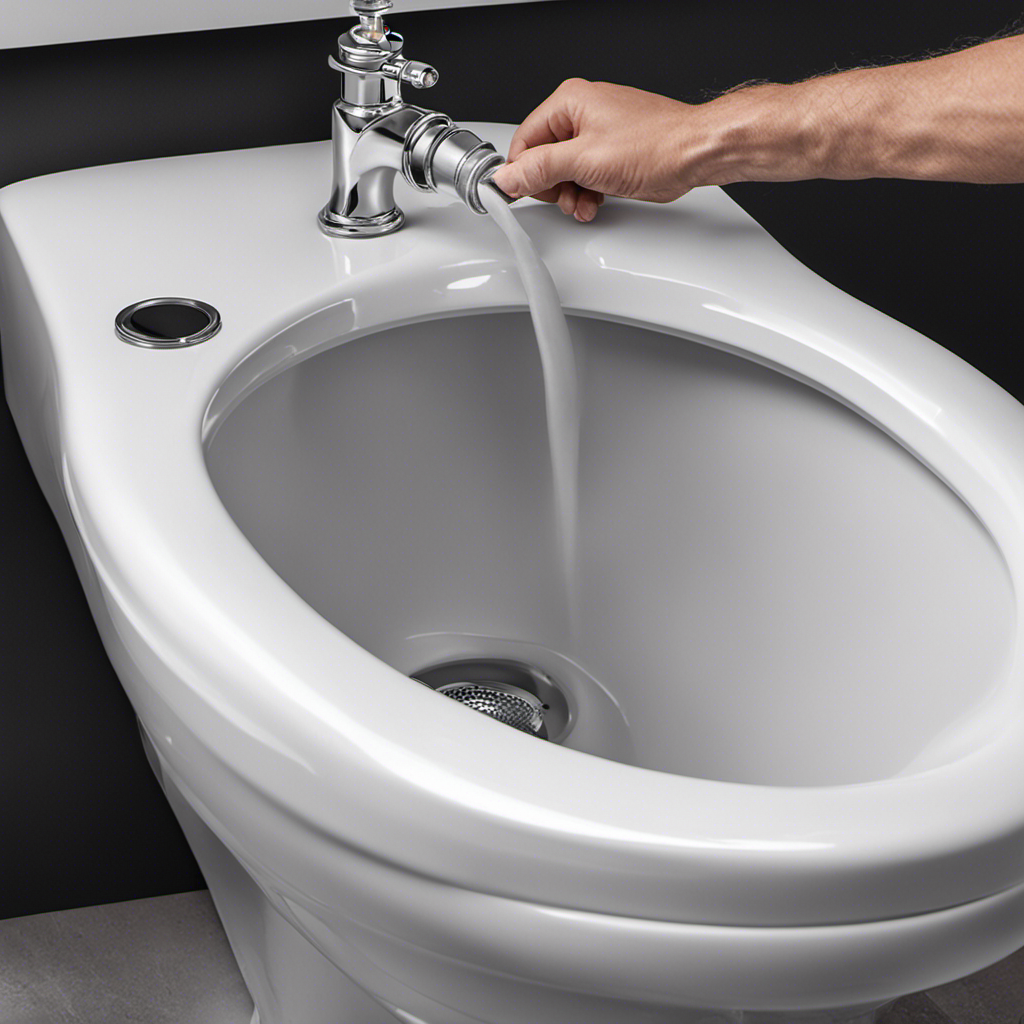As I journey through the world of human waste, I am amazed by its transformative power. Like a phoenix rising from the ashes, our discarded matter undergoes a remarkable process of decomposition, ultimately becoming a valuable resource: fertilizer.
This journey begins within our bodies, but it is through sewage treatment that the magic truly happens. In this article, I will explore the biodegradation process, the three stages of sewage treatment, and the incredible environmental benefits of recycling human waste.
Join me as we delve into the fascinating world of waste and its potential for sustainability.
Key Takeaways
- Human waste can be reused for various purposes such as fertilizer, biogas production, medical procedures, brick-making, hydrogen fuel, metal extraction, and as a source of water.
- Sewage treatment has 3 stages: collection and separation, decomposition by microorganisms, and drying to produce biosolids used as fertilizer.
- Biodegraded waste can be used as fertilizer for plants, improving soil structure and reducing erosion.
- Understanding the breakdown process and sewage treatment helps in promoting environmental sustainability and resource conservation.
The Biodegradation Process: Breaking Down Human Waste
I’m amazed at how our body naturally breaks down consumed food into waste, but further decomposition is required to fully break it down.
When it comes to human waste, there are various composting techniques used to facilitate the breakdown process. One important factor in decomposition is temperature.
Research has shown that higher temperatures can accelerate the decomposition of organic matter, including human waste. This is because higher temperatures promote the growth and activity of microorganisms that aid in decomposition.
In fact, commercial composting facilities often regulate temperature to optimize the decomposition process. By maintaining specific temperature ranges, these facilities can ensure efficient and effective breakdown of waste.
Understanding the role of temperature in decomposition is crucial in developing effective composting techniques for managing human waste in an environmentally sustainable way.
The Three Stages of Sewage Treatment
During sewage treatment, billions of bacteria and fungi break down the waste and eliminate harmful bacteria. The role of bacteria in waste decomposition is crucial for the effectiveness of sewage treatment technologies. Here are four key points to consider:
-
Bacteria and fungi play a vital role in the breakdown of organic matter in sewage. They secrete enzymes that break down complex molecules into simpler compounds that can be easily processed.
-
The presence of oxygen is important for aerobic bacteria to thrive and decompose organic waste. This process, known as aerobic digestion, produces carbon dioxide, water, and energy.
-
In anaerobic digestion, bacteria break down organic matter in the absence of oxygen. This process produces methane gas, which can be used as a source of renewable energy.
-
Bacteria also help in the removal of harmful pathogens from sewage. They compete with and outcompete harmful bacteria, reducing the risk of waterborne diseases.
Understanding the role of bacteria in waste decomposition is essential for developing efficient sewage treatment technologies that promote environmental sustainability.
Harnessing the Power of Microorganisms: Decomposing Waste
The role of microorganisms in breaking down waste is crucial for effective sewage treatment and environmental sustainability. Harnessing microbial activity is the key to waste decomposition, and bacteria and fungi play a vital role in breaking down human waste.
These microorganisms have the ability to break down complex organic compounds into simpler forms through a process called biodegradation. Bacteria, such as Escherichia coli and Salmonella, break down the organic matter present in waste, while fungi, like Aspergillus and Penicillium, help in breaking down cellulose and lignin.
By breaking down waste, these microorganisms not only help in reducing the volume of waste but also in eliminating harmful pathogens and pollutants.
Understanding the mechanisms and functions of these microorganisms is essential for developing efficient sewage treatment systems and promoting environmental sustainability.
From Sludge to Biosolids: Creating Fertilizer From Human Waste
Using bacteria and fungi, we can transform sludge into biosolids, which can be used as a nutrient-rich fertilizer. This innovative waste management solution not only helps in the disposal of human waste but also contributes to creating sustainable fertilizer.
Here are some key points to consider:
-
Biosolids are produced through a multi-stage sewage treatment process that involves the breakdown of waste by microorganisms. This process helps eliminate harmful bacteria and pathogens, making the biosolids safe for use as fertilizer.
-
Biosolids contain valuable nutrients such as nitrogen, phosphorus, and potassium, which are essential for plant growth.
-
By recycling and repurposing human waste into biosolids, we can reduce the reliance on chemical fertilizers and promote a more sustainable approach to agriculture.
These innovative waste management solutions not only address the issue of waste disposal but also provide a valuable resource that can benefit agricultural practices and contribute to a more environmentally friendly future.
Toilet Talk: Challenges in Decomposing Waste at Home
I’ve encountered challenges in decomposing waste at home, especially when it comes to managing toilets effectively. It can be difficult to ensure proper decomposition and disposal of human waste without the help of professional sewage treatment systems. Household toilets are not designed for the breakdown process, and chemicals and boiling water can only do so much. To illustrate the challenges in composting and home waste management, here is a table highlighting some common difficulties:
| Challenges in Composting and Home Waste Management |
|---|
| Limited space for composting |
| Lack of proper equipment and resources |
| Difficulty in controlling temperature and moisture |
| Odor and pest control issues |
| Health and safety concerns |
These challenges make it clear that home composting of human waste is not an easy task. It requires careful planning, knowledge, and resources to ensure effective waste management.
Chemical Tanks and Alternative Solutions for Waste Disposal
Managing waste at home can be challenging, but there are alternative solutions like chemical tanks that can assist in the disposal process. Chemical tanks are innovative waste disposal methods that provide an effective way to break down waste for safe disposal or reuse.
Here are a few key points about chemical tanks and their maintenance:
- Chemical tanks contain specific chemicals that aid in breaking down waste.
- Regular maintenance of chemical tanks is essential to ensure proper functioning.
- Cleaning and disinfecting the tank regularly helps prevent the build-up of harmful bacteria.
- Monitoring and adjusting the chemical levels in the tank is necessary to maintain optimal performance.
Chemical tanks offer a convenient and efficient way to manage waste, especially in situations where running water is not accessible. By utilizing these alternative solutions and maintaining them properly, we can contribute to effective waste management and environmental sustainability.
The Environmental Benefits of Recycling Human Waste
Recycling our waste has numerous environmental benefits that contribute to a more sustainable future. One of the key advantages is the economic implications of recycling human waste. By repurposing biodegraded waste as fertilizer, we can reduce the need for chemical fertilizers, which can be costly to produce and harmful to the environment. Additionally, using biodegraded waste as fertilizer can improve soil quality, increasing crop yields and promoting agricultural sustainability.
However, public perception and acceptance of using biodegraded waste as fertilizer can be a challenge. Some individuals may have concerns about the safety and hygiene of using human waste in agriculture. It is crucial to address these concerns through education and clear communication of the rigorous sewage treatment processes that ensure the removal of harmful pathogens. Providing scientific evidence and case studies showcasing the benefits and safety of using biodegraded waste as fertilizer can help increase public acceptance and promote its widespread adoption.
Frequently Asked Questions
Can Human Waste Be Safely Composted at Home?
Yes, human waste can be safely composted at home using various methods such as composting toilets. Benefits include nutrient-rich fertilizer production, but drawbacks include the need to destroy harmful bacteria. Alternative uses for human waste include biogas production and brick-making.
What Chemicals Are Commonly Used to Aid in the Decomposition of Waste in Toilets?
Chemical additives and microbial agents are commonly used to aid in the decomposition of waste in toilets. These substances help break down the waste matter more efficiently, promoting a cleaner and more effective decomposition process.
How Long Does It Take for Human Waste to Fully Decompose in Sewage Treatment?
In sewage treatment, human waste can take a few days to over a year to fully decompose. Different types of sewage treatment systems may have varying decomposition rates, impacting the environmental sustainability of the process.
Are There Any Health Risks Associated With Using Biodegraded Waste as Fertilizer?
Using biodegraded waste as fertilizer has health benefits, as it improves soil structure and reduces erosion. However, it’s important to ensure proper treatment and eliminate harmful bacteria to minimize potential environmental impact.
What Are Some Alternative Solutions for Waste Disposal in Areas Without Access to Running Water?
In areas without running water, alternative solutions for waste disposal include community composting initiatives and dry sanitation systems. These methods promote sustainable waste management and reduce pollution, ensuring a healthier environment for all.
Conclusion
In conclusion, the journey of human waste from decomposition to fertilizer is a fascinating process that contributes to environmental sustainability and resource conservation.
Through sewage treatment, waste is efficiently decomposed by microorganisms and transformed into biosolids, which can be used as fertilizer. This process not only helps improve soil structure and reduce erosion but also reduces pollution and promotes the reuse of valuable resources.
However, challenges exist in decomposing waste at home, and alternative solutions for waste disposal, such as chemical tanks, should be explored.
Overall, recycling human waste offers numerous environmental benefits, but further research and data are needed to fully understand its potential. Can we continue to harness the power of microorganisms to create a more sustainable and efficient waste management system?










